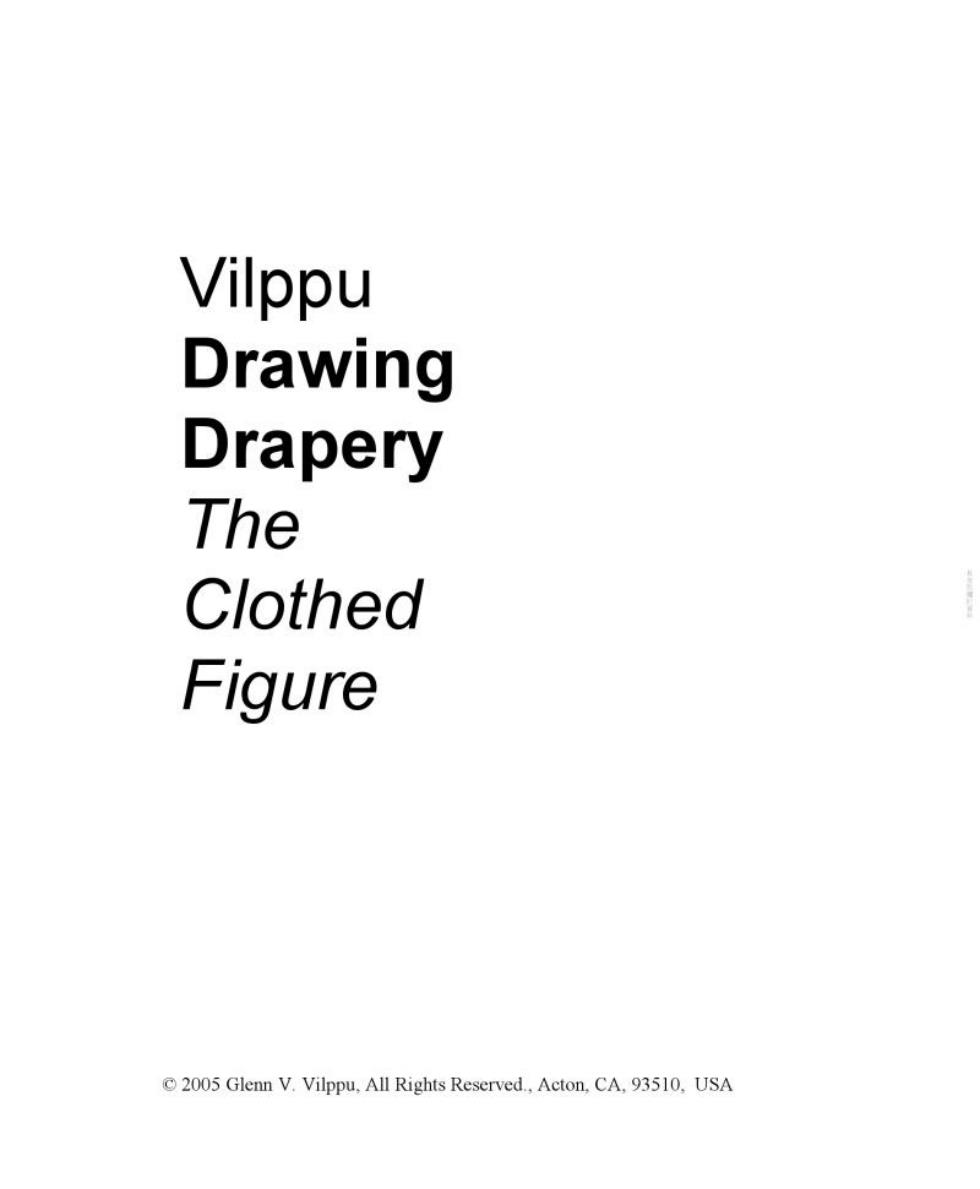
Vilppu Drawing Drapery The Clothed Figure 2005 Glenn V. Vilppu, All Rights Reserved., Acton, CA, 93510, USA
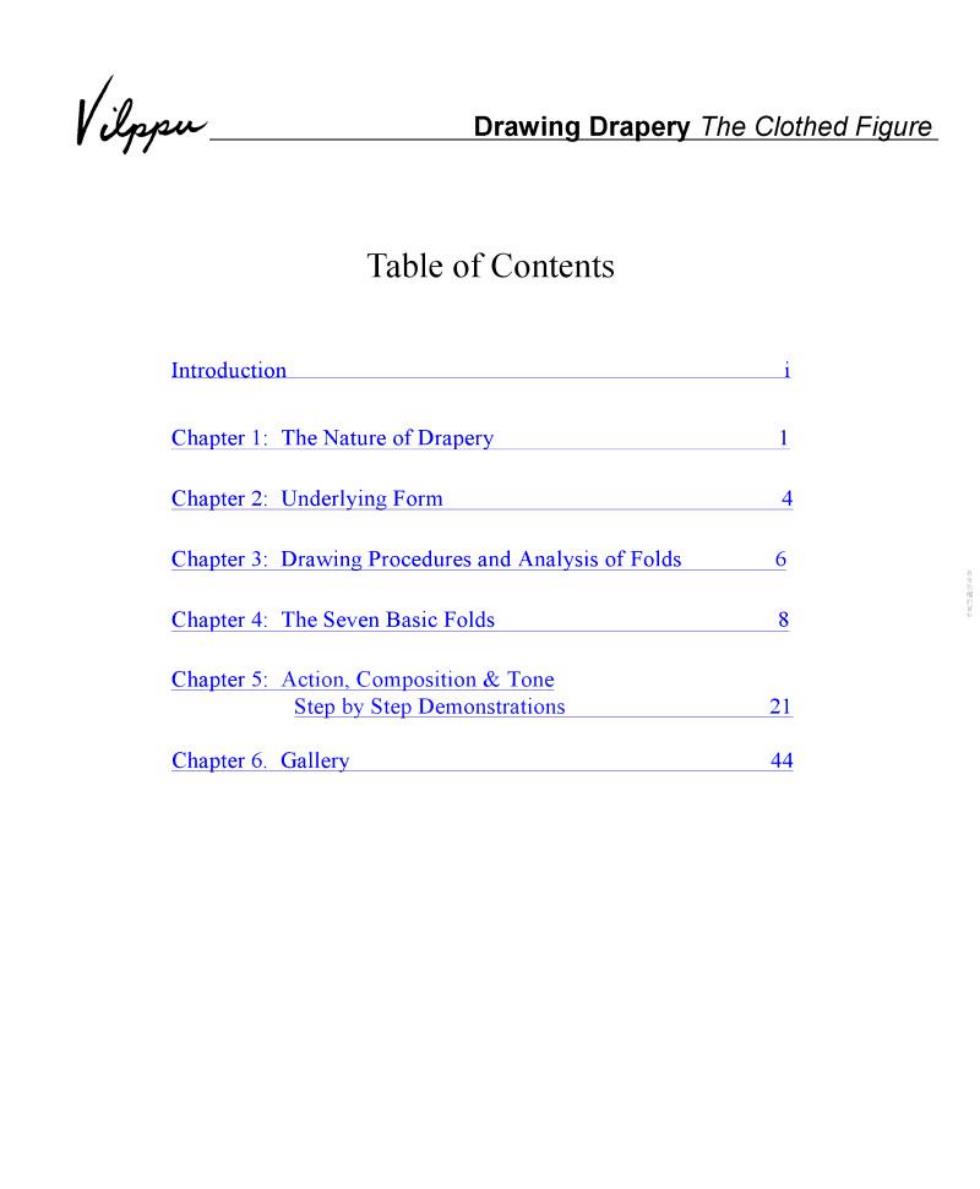
Drawing Drapery The Clothed Figure Table of Contents Introduction Chapter1:The Nature of Drapery Chapter 2:Underlying Form Chapter 3:Drawing Procedures and Analysis of Folds 6 Chapter 4:The Seven Basic Folds Chapter 5:Action,Composition Tone Step by Step Demonstrations 21 Chapter 6.Gallery 44
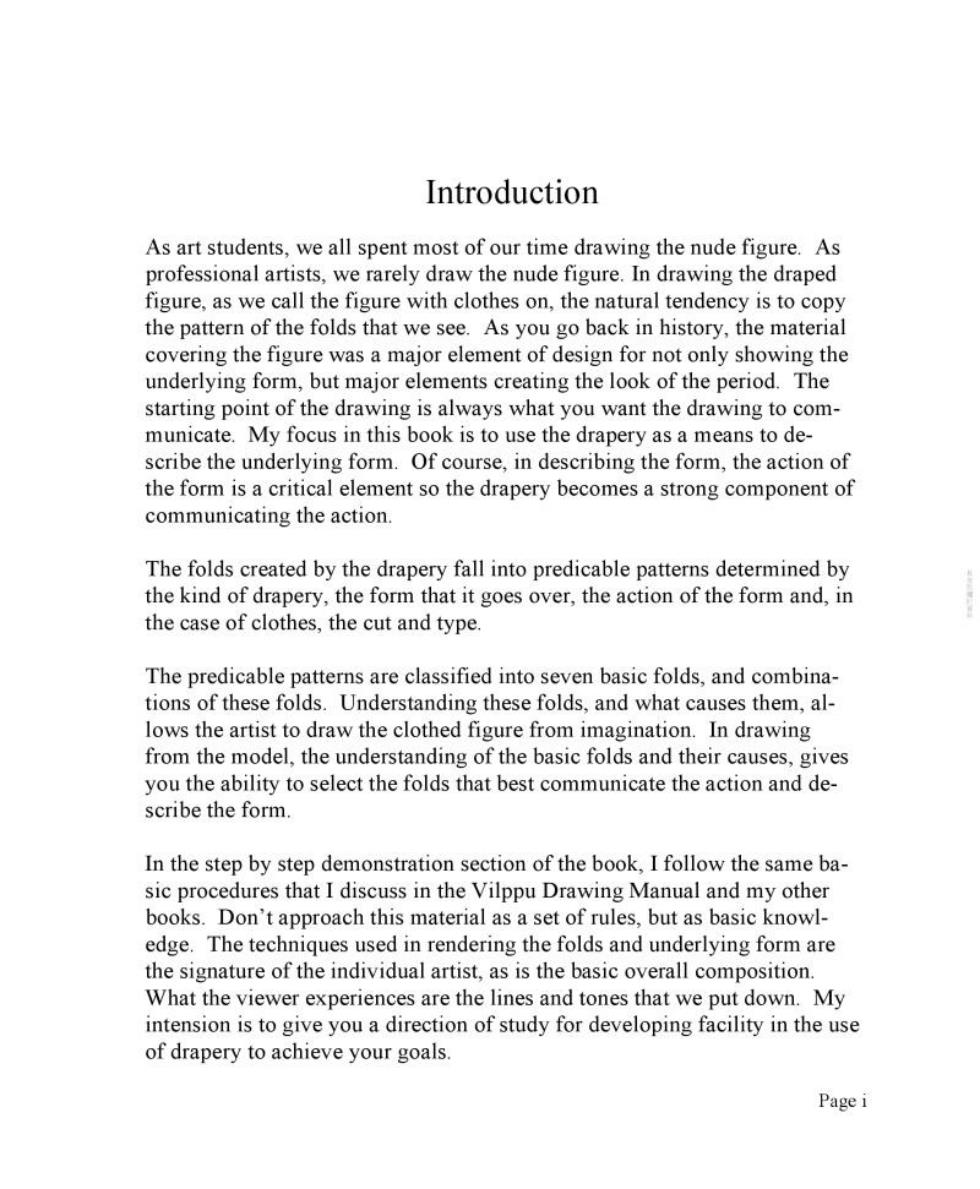
Introduction As art students,we all spent most of our time drawing the nude figure.As professional artists,we rarely draw the nude figure.In drawing the draped figure,as we call the figure with clothes on,the natural tendency is to copy the pattern of the folds that we see.As you go back in history,the material covering the figure was a major element of design for not only showing the underlying form,but major elements creating the look of the period.The starting point of the drawing is always what you want the drawing to com- municate.My focus in this book is to use the drapery as a means to de- scribe the underlying form.Of course,in describing the form,the action of the form is a critical element so the drapery becomes a strong component of communicating the action. The folds created by the drapery fall into predicable patterns determined by the kind of drapery,the form that it goes over,the action of the form and,in the case of clothes,the cut and type. The predicable patterns are classified into seven basic folds,and combina- tions of these folds.Understanding these folds,and what causes them,al- lows the artist to draw the clothed figure from imagination.In drawing from the model,the understanding of the basic folds and their causes,gives you the ability to select the folds that best communicate the action and de- scribe the form. In the step by step demonstration section of the book,I follow the same ba- sic procedures that I discuss in the Vilppu Drawing Manual and my other books.Don't approach this material as a set of rules,but as basic knowl- edge.The techniques used in rendering the folds and underlying form are the signature of the individual artist,as is the basic overall composition. What the viewer experiences are the lines and tones that we put down.My intension is to give you a direction of study for developing facility in the use of drapery to achieve your goals. Pagei
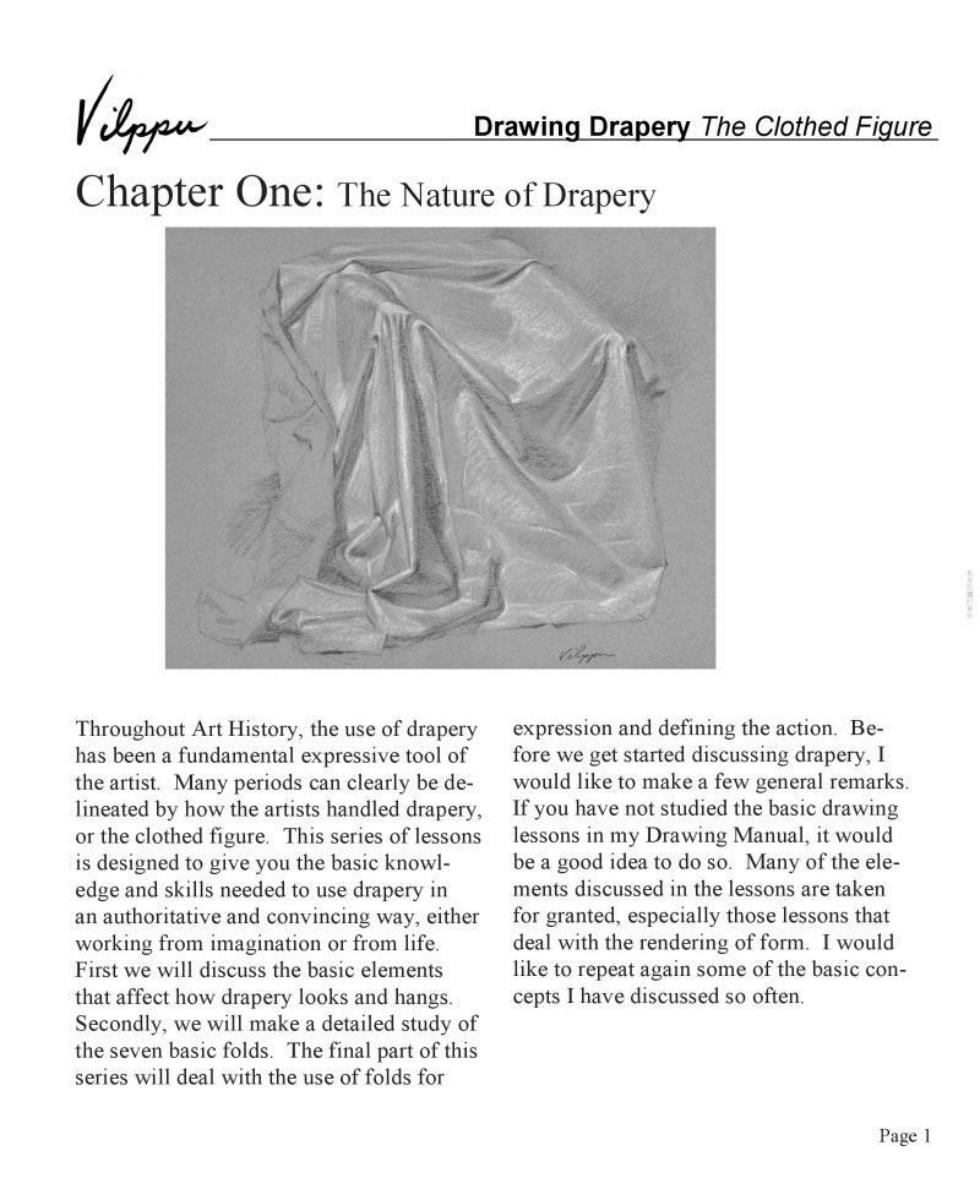
Drawing Drapery The Clothed Figure Chapter One:The Nature of Drapery Throughout Art History,the use of drapery expression and defining the action.Be- has been a fundamental expressive tool of fore we get started discussing drapery,I the artist.Many periods can clearly be de- would like to make a few general remarks lineated by how the artists handled drapery, If you have not studied the basic drawing or the clothed figure.This series of lessons lessons in my Drawing Manual,it would is designed to give you the basic knowl- be a good idea to do so.Many of the ele- edge and skills needed to use drapery in ments discussed in the lessons are taken an authoritative and convincing way,either for granted,especially those lessons that working from imagination or from life. deal with the rendering of form.I would First we will discuss the basic elements like to repeat again some of the basic con- that affect how drapery looks and hangs. cepts I have discussed so often. Secondly,we will make a detailed study of the seven basic folds.The final part of this series will deal with the use of folds for
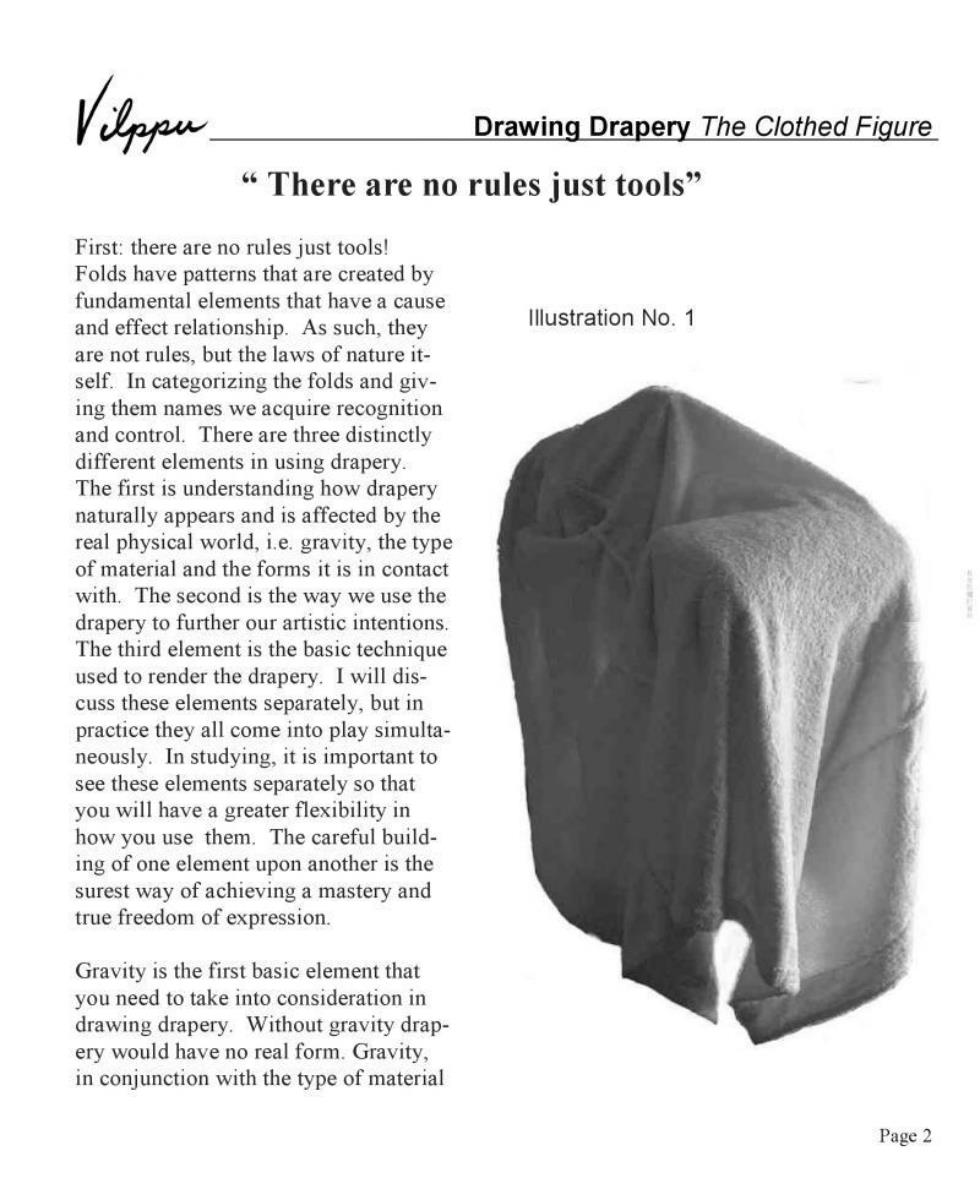
Drawing Drapery The Clothed Figure “There are no rules just tools” First:there are no rules just tools! Folds have patterns that are created by fundamental elements that have a cause and effect relationship.As such,they Illustration No.1 are not rules,but the laws of nature it- self.In categorizing the folds and giv- ing them names we acquire recognition and control.There are three distinctly different elements in using drapery. The first is understanding how drapery naturally appears and is affected by the real physical world,i.e.gravity,the type of material and the forms it is in contact with.The second is the way we use the drapery to further our artistic intentions. The third element is the basic technique used to render the drapery.I will dis- cuss these elements separately,but in practice they all come into play simulta- neously.In studying,it is important to see these elements separately so that you will have a greater flexibility in how you use them.The careful build. ing of one element upon another is the surest way of achieving a mastery and true freedom of expression. Gravity is the first basic element that you need to take into consideration in drawing drapery.Without gravity drap- ery would have no real form.Gravity, in conjunction with the type of material Page2